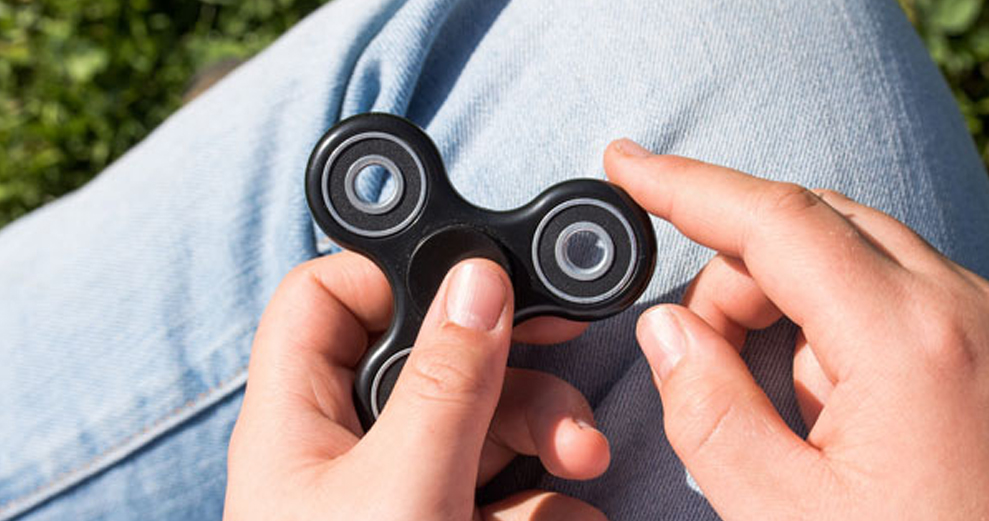
Compromising: The Fidget Spinner Controversy
Move over bottle-flippers: Fidget spinners are taking the main stage. Marketed as aides for individuals with anxiety, autism and ADHD, fidget spinners are small gadgets that spin in your hand as you twirl the blades. Forbes calls them a “cure for nervous or bored energy,” and they are meant to help displace the fidgeting needs of users. They’re also being misused, however, or creating a distraction for teachers and other students.
As such, schools and teachers are trapped between a rock and a hard place: Do you confiscate or ban the fidget spinner and possibly debilitate a child who needs the tool—or endure the wrath of parents who insist that their child needs this tool? Do you punish the children around them for being distracted?
Neither scenario is satisfactory.
But the jurisdiction on fidget spinners doesn’t necessarily have to be black and white. And anything, really, can be distracting when used incorrectly or inconveniently. (Pen clickers, anyone?) Consider these compromises, to help facilitating learning during the fidget spinner craze, both in and out of the classroom.
1. Suggest an alternative.
The fidget cube preceded the fidget spinner. Unlike the fidget spinner, the fidget cube can be used more discretely under the cover of a student’s desk or table. If a student can benefit from a tool such as the fidget spinner, suggest the parents invest in a fidget cube, instead. And make sure the student knows to use it discreetly, so as not to distract other students.
2. Pass classroom rules and regulations.
Hold a classroom meeting and bring up the issue:
Hey, I’ve noticed some of you have been using fidget spinners in the classroom. That’s (great, good, awesome … OK, I guess). But they’re becoming a distraction for some of your classmates. How can we solve this problem?
Get students in on the conversation for regulating the use of fidget spinners—even if you have rules and regulations set ahead of time, such as fidget spinners must stay in our hands and you cannot throw fidget spinners and you cannot use fidget spinners during hands-on activities, et cetera.
In the end, make sure students—and parents, for that matter—know that fidget spinners are used as a tool, not a toy, or they’ll be confiscated.
3. Get students out of their desks.
Kids who need fidget spinners typically benefit from more movement in the classroom for more engaged learning. If you take away a fidget spinner, consider supplementing your lessons with activities that get students moving in some way, shape or form.
4. Use the fidget spinner excitement to your advantage.
Fidget spinners are trending—and whether or not they stick around with students who struggle with ADHD or other disorders after the trend evaporates is unforeseen. While they’re popular among students, use them to fuel learning. Have students write opinion essays on the pros and cons of fidget spinners, or engage students in a STEM activity creating their own spinners out of cardboard, play dough, pennies and other materials.
Written by Cassie Westrate, staff writer for Teach & Travel magazine.

